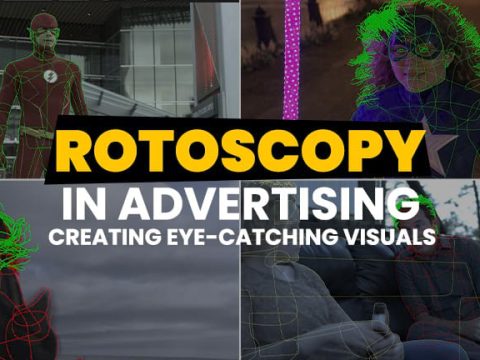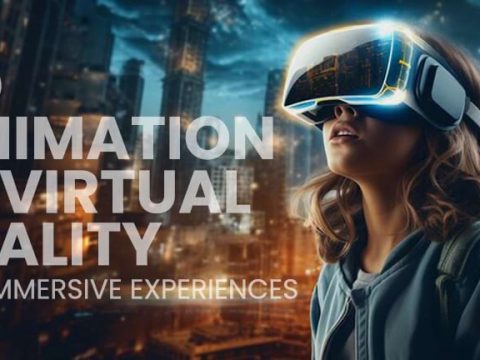They watch! They Book! -The Charisma of Video Marketing!
August 7, 201410 CORPORATE FILM PRODUCTIONS THAT HAVE MADE A DIFFERENCE
October 31, 2014You have never missed a show of Aladdin, ever! And neither have you moved away from the TV when a Kung Fu Panda movie is on. They are both animated movies. But what differs about them is how we feel at the end of it! In a 2D animation, the story that the character is a part off becomes everything and we root for him. Haven’t we always cheered Aladdin on as he fights to beat the bad guys and save the kingdom? In a 3D animation, we fall in love the whole story and wish for Po keep Kung Fu alive, of course. But we also love the little nuisances about the character that can be brought to the fore front here. Po and his adorable star struck silliness can never be forgotten! To create memorable characters like these, you should explore how to create 3D animation and experiment with simple 3D animation techniques to start your journey.
What brings about this difference?
Let’s talk a little bit about the 2D and 3D animation creation process with respect to the basic differences in between them.
- 2D animation is heavily dependent on drawings while 3D animation is more software intensive, where a virtual mise en scene is created based on pre-viz 2D drawings.
- In a 2D animation, if you are drawing someone walking, the portions of the frame that you cannot see can be ignored. This is not something that 3D animators can afford to do. It is all one big frame where every little detail takes precedence.
- Another point to keep in mind is that one second of animation has about 24 frames in it. In a 2D animation when the change in movement is too little it is okay to use the same drawing for a few frames. It looks like the character is not moving and that is fine, because 2D has developed its own style over the decades which the audience has accepted. Whereas in a 3D animation, when a character seems completely still, it is an awkward sight. Can you image little nemo’s dad just holding still there for a few seconds while he desperately looks for his son? This makes the animation tougher to create. It allows the animator to bring in small yet subtle changes sometimes in the expressions on the face or maybe the posture of the character, adding an element of emotion and life.
And it is not impossibly hard to do either! Obviously, it would be hard to meet the Disney quality at the very beginning but we can start simple and work our way up. Here is how you can start by creating a small bit of animation.
If you’re questioning how to make 3d animated videos, start by studying the fundamentals of how to make 3d animation. Once you have a solid understanding of the foundations, you may progress to more complex approaches and finally learn how to create 3d animation like a professional. Starting with a simple 3D animation project will allow you to gain confidence and abilities.
Step by step guidelines
Keep in mind that every animator has his/her own style. But while you are still finding your footing, it is best to follow a general procedure that will help you deliver better results.
Step 1: Find a reference video
This is by far the most important step there is.
You might think that you know an action well but as a designer you will look at it from an entirely different perspective. Make sure you look up references before you begin the creation.
The whole process will feel like you are shooting blind if you skip this!
Step 2: Identify the important poses that define the animation
The next step in line would be to identify what are known as the defining poses.
These are the individual shots that people can look at even without the movement and figure out what is likely to happen. Like in a comic book strip. They aren’t moving but all the right actions are emphasised on. Put the key poses out like a strip and they should tell you a story.
Once you have identified these, it is essential to get them right. This step is as important as laying the foundation of a building! It simply cannot be wobbly.
Step 3: Add in the poses that fill in between
Next in line is adding the intermediate poses between the defining poses.
Intermediate poses are what we place in between the key poses that make the animation look as close to an actual movement as possible in the step mode. Step mode is the stage where we don’t still allow the computer interpolation between the frames due to which it will seem choppy.
Step 4: Connecting the defining and intermediate poses.
In this stage, we allow the computer to interpolate between each step, making it seem smoother.
Titbit: The computer could be better at this interconnection, so you need to ensure that you do an excellent job with the blocking.
Now that we have our animation connecting together, it is time to focus on making it even smoother.
Step 5: Introducing a flow to the animation
This is the time to ensure that all the curves are correct and that the animation doesn’t seem too abrupt. By the end of this step, the animation must look almost done.
Step 6: Adding in the human touch
This is the part that makes 3D animations super cool.
Here is where we add all those tiny gestures that makes the world of animation seem more real. It is best to use this stage to add in the elements that make the action seem more believable.
And if you look at your screen now you have a 3D animation staring back at you!

Jayprakash Sahu
Jayprakash has over seven years of experience in the 3D field and started his career in 2014 as a 3D artist in Think 3D, a 3D printing company; while working there, he designed a life-size statue of Dr. APJ Abdul Kalam that is situated on AMTZ Campus, Vizag.




